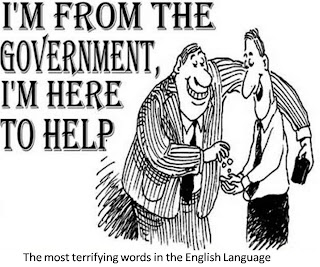
From reading the popular press nowadays one gets the impression that our culture is awash in addictive drugs. In an urban hospital emergency department such as the one where I work, there is abundant evidence that substance abuse is a significant social problem.
Spend some time in such an ED, and you will quickly learn that our society has decided this social problem is a medical problem.
Day after day (and even more, night after night), police and EMS bring us people who have used substantial quantities of mood-altering substances. Ethanol, fermented from myriad carbohydrates, remains the most popular. Various derivatives of the opium poppy are close behind. The extract of the coca leaf is favored in some circles. From time to time we see folks who prefer hallucinogens, psychedelics and dissociative agents.

It would appear that life, for some people, is too boring, depressing, or stressful to be lived without the effects of chemicals that alter the connection between the brain and the external world. This has been true for many centuries.

A decade ago I read an illuminating little book titled Forces of Habit: Drugs and the Making of the Modern World, a fascinating examination of the use of mood-altering substances. Attitudes toward such use, I learned, have been tremendously variable across cultures and time.
In our present society we accept, more or less, indulgence in alcohol, although we impose some restrictions on its use. Drunkenness while operating a motor vehicle will get you in trouble with law enforcement authorities, as will drinking to the point of becoming very badly behaved in public.

If this T-shirt slogan applies to you, it's time to cut back.
Nicotine is allowed but restricted, inasmuch as there are so many places where tobacco smoking is no longer permitted, although that is because the smoke itself (rather than its effect on behavior) is considered offensive.

Caffeine seems the least disapproved of the commonly used addictive substances, at least so far.
Thus the Ethiopian coffee farmers can subsist - or do better than that if they are lucky enough to deal with "fair trade" merchants rather than the price-controlling international cartel.


The opium farmers in Afghanistan and the growers and distributors of the coca leaf in Latin America meet with much less favor among Western authorities. Are their products more powerfully addictive or more dangerous than the others? This is an intriguing question.
From my professional observations, it seems cessation of use is every bit as challenging for those addicted to nicotine as for cocaine or heroin.
Doctors, and this is true for those in my specialty at least as much as any other, find substance abuse and dependence troubling and often tragic. Alcohol, tobacco, cocaine, and heroin ruin health and destroy lives, affecting not only users but their friends and families. One of the most vexing aspects of all this involves the derivatives of the opium poppy (known as "opioids"). Because these substances have a legitimate medicinal purpose, physicians are expected to play a large role in assuring that their use is safe and effective - and limited to the management of painful injuries and illnesses.
With so many people determined to obtain and use opioids for recreational purposes, this is quite a challenge. Medical science brought these substances to the modern Western world, and now we are heavily burdened with attempts to control their use.

A German chemist isolated morphine from the opium poppy in the early 19th century, and the German company Merck made it commercially available in 1827. In 1874 an English chemist modified the morphine molecule by adding two acetyl groups, yielding the substance that became known as heroin. Then a German chemist continued work in this area, resulting in its commercial introduction as a cough suppressant and pain reliever by Bayer in 1888. Twenty-five years later Bayer pulled it from the market because of problems with addiction.
That was 60 years before the Drug Enforcement Administration was established (1973). Now we have the DEA, as well as state medical boards and pharmacy boards, to make rules and decide what doctors can and cannot prescribe for patients, and under what circumstances.

It seems every time I pick up a medical journal or trade publication or peruse the popular press via my favorite news outlets, there is something new doctors are supposed to be doing (or not doing) to address this problem. A year ago the Centers for Disease Control and Prevention asked my specialty organization, the American College of Emergency Physicians, to develop guidelines on the prescribing of opioid analgesics in emergency departments, and earlier this month the ACEP Board of Directors approved such guidelines after lengthy and spirited discussion.

Sometimes I feel like Don Quixote tilting at windmills when we in the emergency department are trying to solve social problems. After more than a quarter century dealing with this one, I can tell you emergency physicians are, by and large, very conservative in their prescribing of opioids and diligent in their efforts to ferret out those who are seeking prescriptions for recreational use or diversion (selling the pills for profit). Nothing we do will solve the problem of pill mills, described in all their astonishing brazenness in an article in Bloomberg's Business Week earlier this month.

At the root of all this, I believe, is an inexplicable, desperate human need for an altered reality, resulting in striking immoderation in the use of substances that seem, just a bit and for just a bit of time, to provide that alteration. In my more philosophically reflective moments I wonder why it is my job to try to separate those who want relief from physical pain from those who seek relief from psychological pain in a way that does not meet with societal approval.
But I like my work, even if I don't care for that part of it, and I will soldier on.












